The United States Capitol is possibly the most architecturally impressive building I’ve come to witness. The grand 19th-century neoclassical architecture invokes the ideals set forth by the Founding Fathers of America through shining marble and fantastic architectural sculptures. So when we arrived at Washington D.C., we made it our priority to visit.
Book a Tour with Your Senator or Representative
If you are a U.S. citizen, I highly recommend booking a tour the Capitol through the offices of your Senator or Congress Representative. To find your government official, just look up your Senator by your state or Representative with your zip code. To make a reservation, call the office number and tell them you’d like to book a tour of the U.S. Capitol. Group size maximum is 15 constituents, but they tend to run smaller. When we booked our trip at our Senator’s office, we did it a week in advance and ended up in a group of five. Since you are a citizen, there is no fee for touring the U.S. Capitol.
For non-citizens, or if you don’t wish to go through your Senator or Representative office, you can book a tour via the Capitol Visitor Center website. You can also go directly to the visitor center, and try to snag a same-day pass, but they are limited and tough to get during holidays, spring season, and summer season.
Regardless of how you book your tour, you will see the same historical highlights of the Capitol. There are a few main differences with the Congressional staff tour versus the regular tour: First, you’ll get to travel the United States Capitol subway system used by your representatives. Since all tours start the congressional offices, it’s the quickest way to get to the Capitol which are a few blocks away. Colloquially called the “Senate Slide,” the underground network links various legislative buildings to the Capitol, ferrying elected officials to and from locations. When we did our tour, Congress was on “State Work Period” or “Summer District Work Period” so the subway was eerily quiet. If you’re wondering what that is, it isn’t so much as a vacation as the media continually mocks — this is when they do constituent relation work, political campaigns, and press tours. The second difference with the staff tour is that you’ll get to bypass the lines, and maybe see a few extra locations depending on which areas are open.
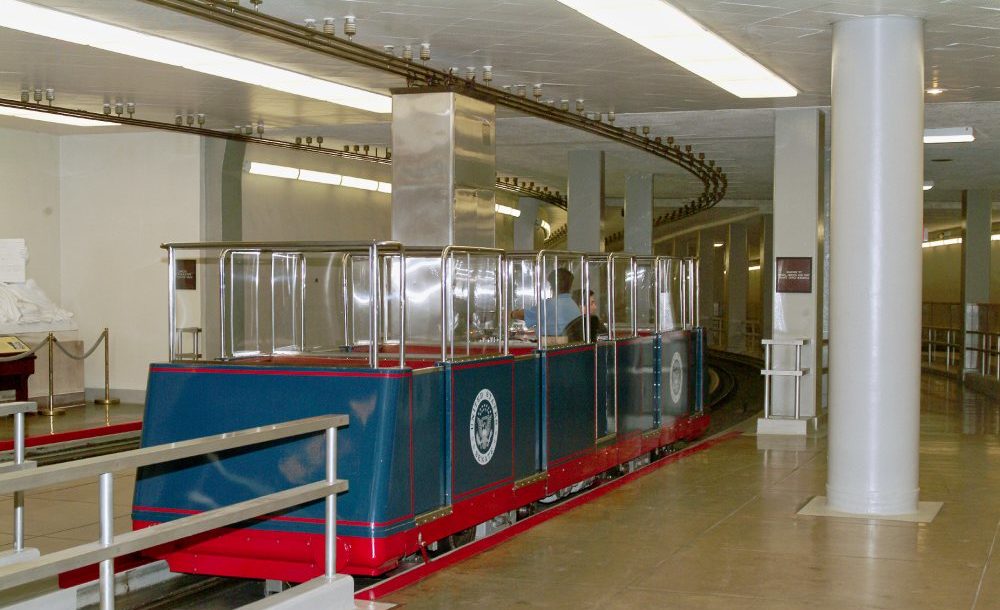
Senate Subway
Some Tips Before You Go
The Capitol, like many other government buildings, has tight security restrictions. The website lists a litany of forbidden items, but in short, we left much of our stuff in our Airstream. The only thing we brought was our wallets, cell phones, and cameras. They don’t even allow water or food into the building. If you do bring restricted items (as oppose to banned things), you’ll have to submit them to the check-in counter. Last time I was there, the allowed small bags and strollers at the coat-check desk, which is on the upper level of the Visitor Center. Be sure to visit the U.S. Capitol website for more details on this.
I also suggest providing yourself enough time before and after your tour. Navigation can get pretty tricky in the Capitol area, and it’s easy to get lost for the first time visitor. Also, be prepared for security checks complete with x-ray machines, metal detectors, and the randomly selected pat-down. If you want to go fast, take everything out of your pockets and put them in a purse or in the buckets they offer. If you have a metal belt buckle, replace it with a plastic or carbon fiber one, so you won’t have to take it off with every check you encounter.
Since there’s no outside food or drink permitted in the Capitol building, you’ll need a bit of time to find food when you’re hungry. The best option is the Capitol Cafe, located on the lower levels. Lines are long when Congress is in session and the tourist season is high, so allow yourself an hour or so to eat. I’m happy to report that the Capitol has delicious food and at reasonable prices. The tasty food came at me with a bit of a surprise since I’ve eaten a few too many tasteless and overpriced meals at National Parks and other touristy spots across the country.
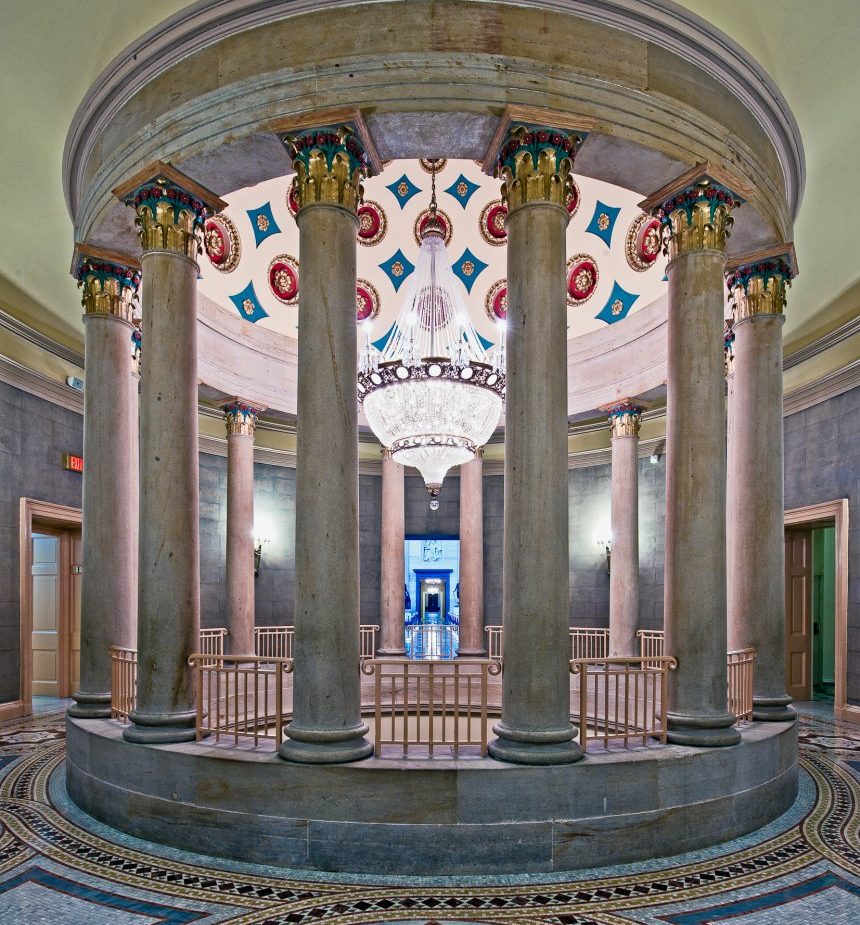
Small Senate Rotunda
The Visitor Center
Since we booked a tour through Senator Maria Cantwell’s office, we started our tour at the Hart Senate Office Building. From there we took the underground tram to the U.S. Capitol building. Our staffer then led us up from the subway terminal in the basement to the Upper Level, to make a quick circuit to the restrooms and then to view the Emancipation Hall below. I got a brief glimpse of where other visitors come in through the sunken entrances on the east side of the Capitol Building before we’re quickly guided down into the Hall itself.
We felt lucky to get a pretty cool staff guide; we didn’t have to wait in line at all. I watched our staffer neatly slide behind the ticket desk while we leisurely waited in the Emancipation Hall, next to the original restored plaster model of the Statue of Freedom. Our guide promptly returned, before I had time to read about her bronze counterpart proudly standing outside upon the dome’s apex. We each received two gallery viewing tickets — one for the Senate Chamber and another for the House Chamber — and then a visitor pass sticker which gives us access to the Rotunda, Crypt, and the Old Supreme Court Chamber.
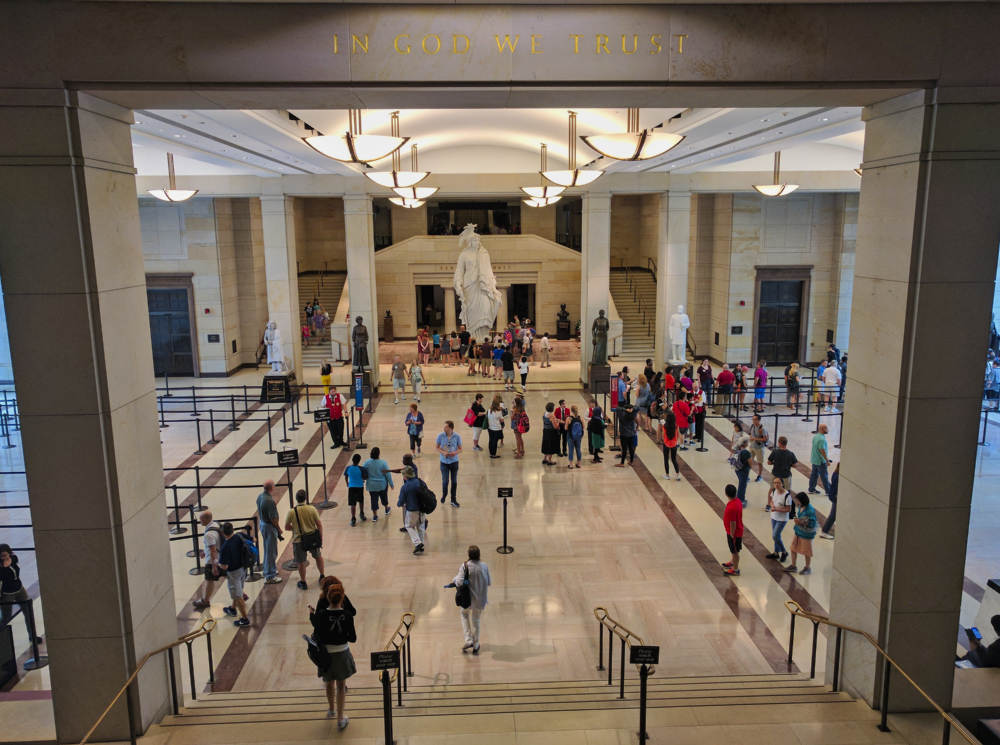
Visitor Center
Emancipation Hall & Mother Joseph
After our guide distributed tickets, we got a quick tour of the National Statuary Hall Collection. The whole collection is composed of which 100 statues, two from each of the 50 states — 25 of which live in the Emancipation Hall of the Visitor Center. Since we’re with a Washington State Senatorial staffer, we make a quick stop at Mother Joseph.
I remember feeling slightly embarrassed not knowing who Mother Joseph was. I’ve lived in Washington state since I was a toddler, and in that time I’ve never read nor learned about Mother Joseph — even in my Washington State History class back in high school. The bronze statue was placed in the 1980s to honor one of the first architects in the Washington Territories. She was known as “the Builder,” and designed and oversaw the construction of 29 schools and hospitals, one of which was Seattle’s first hospital.
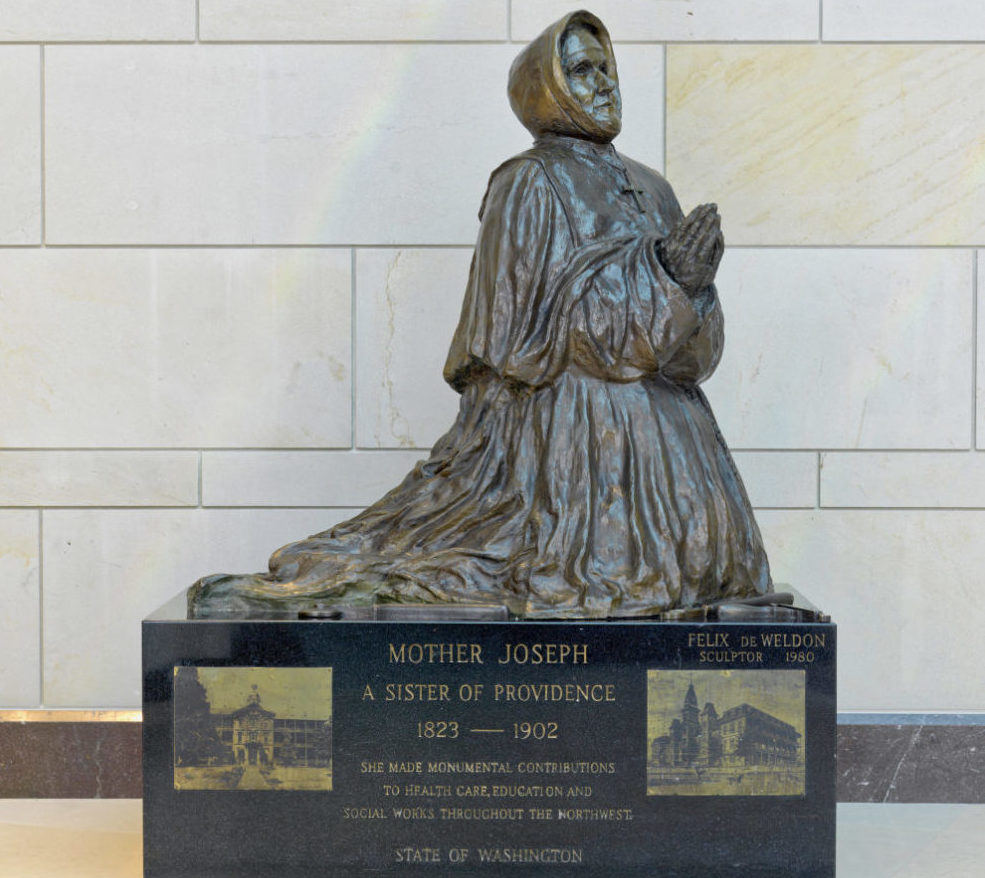
Mother Joseph
Exhibition Hall
Also within the visitor’s center is the Exhibition Hall. Our group doesn’t linger in this area for long, since its open to the public even without a visitor pass. Here there are kiosks, diagrams, displays, and artifacts describing in detail the history of the United States Congress and the U.S. Capitol. Since time is short, we make a note to come back later after our tour.
The Crypt
We quickly move up the escalators and back to the Upper Level, but this time on the western half. Here there are long lines for the Introduction Film, thankfully we skip it and go straight up to the First Floor and the Crypt.
Within the broad circular area, 40 Doric columns of brownstone boastfully stand, groined by sandstone arches. Each vault supports the floor of the Rotunda. A star set in the center of the floor marks the point at which the streets were planned out and counted. In the outer circle of columns, 13 statues colonies stoically persist, reminding us of the original 13 colonies.
At one end of the Crypt, a replica of the Wyems-copy Magna Carta sits within an ornately gilded presentation case atop a sandstone pedestal. In 1976, the British Parliament gifted Wyems-copy Magna Carta to Congress in honor of the United States bicentennial celebration. Since the original Wyems-copy Magna Carta is one of 13 known copies hand-written in 1215, the original securely sits within the vaults of the National Archives.
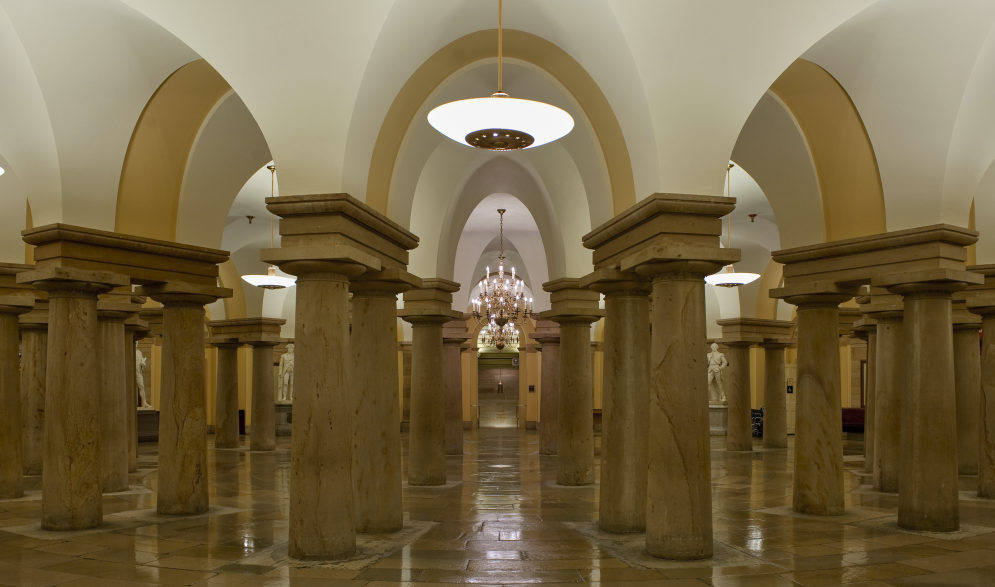
The Crypt
Old Supreme Court Chamber
Just north of the crypt, we get to visit one of my favorites: the Old Supreme Court Chamber. From 1800 to 1806, this room first served as the United States Senate chamber. By 1806, the North Wing needed repairs from heavy use, and so Capitol architects decided to divide the room in half. In 1810, the North Wing reopened with the lower half became what we know as the Old Supreme Court, while the upper half served as the Old Senate Chamber. During the War of 1812, the British gutted and set fire to the North Wing. By 1819, workers rebuilt the walls, where the Supreme Court would hold sessions for the next 41 years, until 1860.
Over the next hundred years, the chamber would serve different functions as the Supreme Court moved locations. When the court moved upstairs to the Old Senate Chamber, the downstairs area became the Law Library of Congress until 1941. The room then served as a reference library, and later as a committee room for the Joint Committee on Atomic Energy, when the Supreme Court moved yet again in 1960. From 1960 to 1972, the Old Supreme Court Chamber hit an all-time low as a storage room. In 1973, Congress voted to restore the chamber to her 1860s appearance and to allow citizens to visit the area as a historic site.
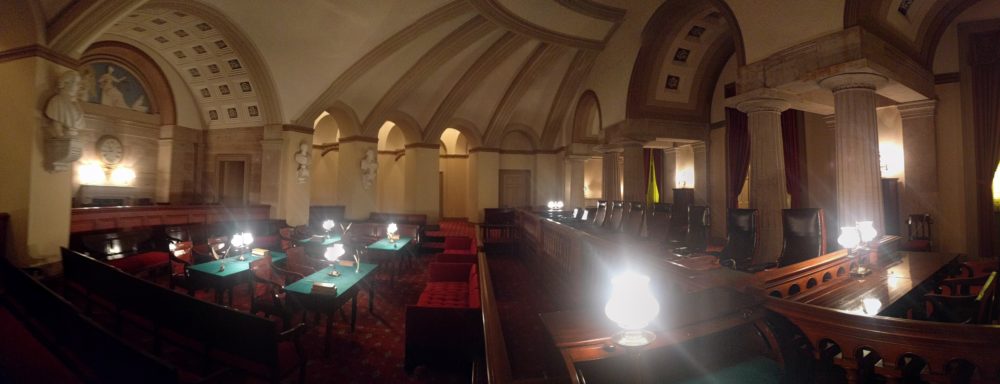
Old US Supreme Court
Speaker’s Balcony
Before heading to the Rotunda, our tour deviates drastically from the usual route. We weave upstairs and move through ornate hallways decorated with white busts and stoic paintings of historical figures. Our guide then opens the door to a very formal office. “Welcome to the Speaker’s Office,” he beams brilliantly. He then guides us through a pair of glass doors and out to the Speaker’s Balcony. We take a moment to bask in the fantastic view of the National Mall, which is punctuated by the bright white Washington Monument — a vista I’ve seen few times on CNN or within Washington Post feeds.
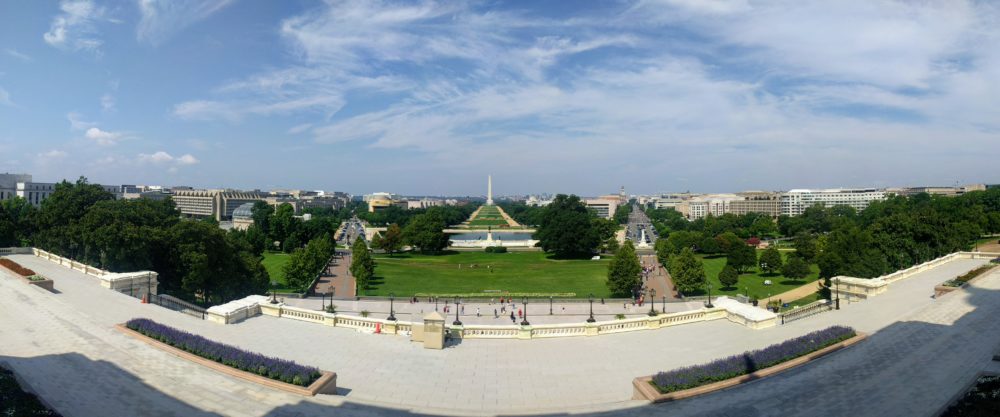
Speakers View
Capitol Rotunda
After a few pictures, our guide leads us to the Capitol Rotunda. I found it hard not to look up when beneath the dome and stare at The Apotheosis of Washington fresco. From the canopy, my eyes move down to the Frieze of American History, which encircles us in a band just below the windows. The fresco cycle contains 19 scenes of American history starting with a female personification of America in an allegorical setting, and then around to James Oglethorpe and the Indians at the opposite side, and finally back across to the final freeze, “The Birth of Aviation.” Just beneath, eight niches hold huge framed paintings depicting major historical events in American history. I finally then spot several white statues of famous American figures, which guard attentively at cardinal points around the room. Overall, the dome is a spectacle, and I could spend a few hours examining artwork and architecture.

National Statuary Hall
Our staffer then leads us through the south hallway to the National Statuary Hall. We enter a room built in a style pattern after a Greco-Roman amphitheater. Colossal marble columns rise up and around the perimeter. Between each column, stands a statue of a prominent American figure either made of marble, bronze, or sandstone.
Before functioning as a Statuary Hall, the room served as the third meeting place for the House of Representatives. The British destroyed the first room in the War of 1812. Architects so hastily rebuilt the second such that they introduced a critical flaw: the smooth half dome carried the echoes so that representatives could not conduct business over the noise. By 1850, they rebuilt the Old Hall which served the House for seven years before they moved to their current hall.
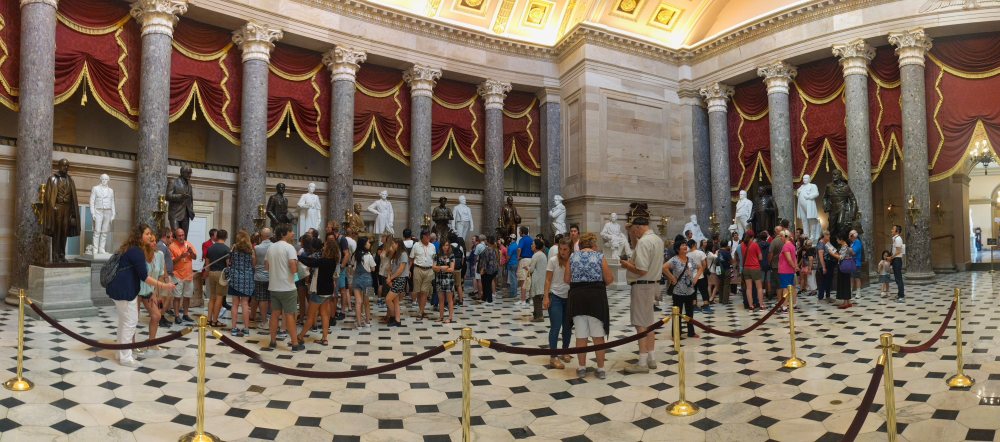
Statue Hall
House Chamber & Senate Chamber
For our final tour location, we enter the galleries for both the House Chamber and Senate Chamber. Our guide takes up a set of stairs bypassing the line of tourists waiting for the elevator. We end up in a hallway connecting the two chambers: toward the north is the Senate and to the south is the House. Since both the Hall and Chamber are restricted areas, the only way to view them is from the upper galleries. The procedure is the same for both galleries: we show our gallery passes to the attendant and then go through another security check. Since Congress is out of session, there isn’t much to do except to admire the architecture and ornate furniture, then ask hovering Congress interns questions about the chamber.
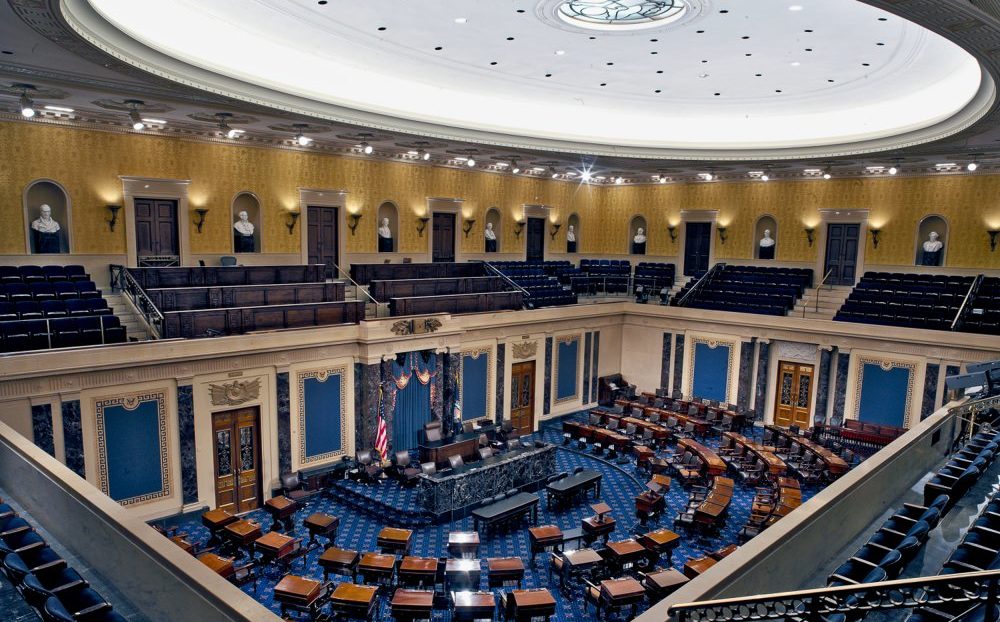
Senate Chamber
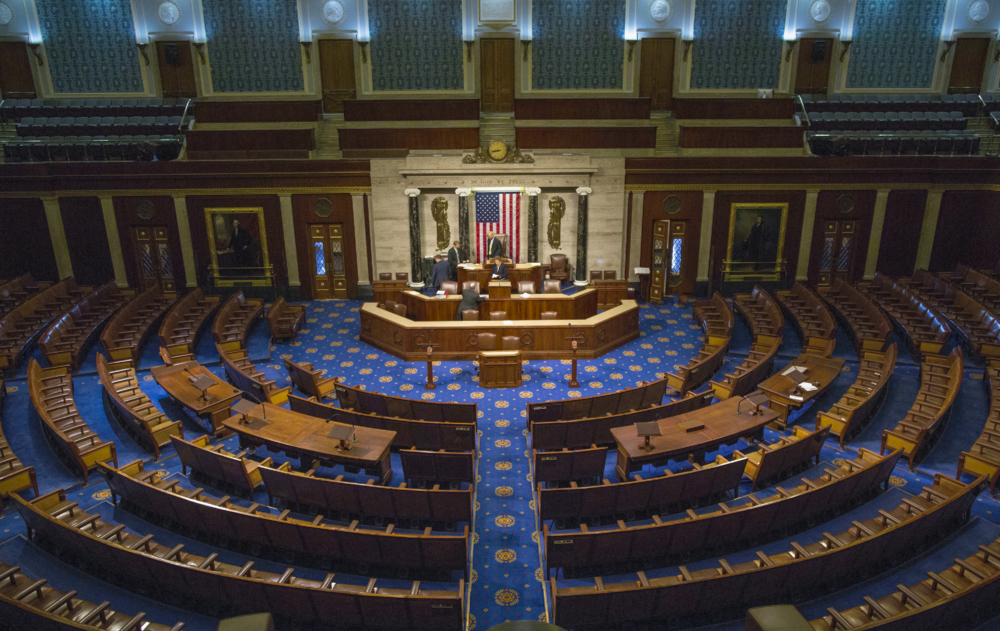
House Chamber
Capitol Cafe
After the tour, we bid our guide thanks and farewell, leaving us to explore on our own. At this point, we’re somewhat exhausted and head downstairs to the Capitol Cafe to end our tour with liberty fries and apple pie.
- Burundi Corridors
- US Capitol
- Speakers View
- Old Senate Chamber
- Ornate Lid of the Magna Carta
- Cox Painting
- Statue Hall
- Old US Supreme Court
- Statue Hallway
- Out on the Speaker’s Balcony
- Rotunda
- Rotunda Views
- Capitol Rotunda
- In front of the US Capitol
- Sig in the Old Senate Hall
- The Center of DC
- Statue of Freedom
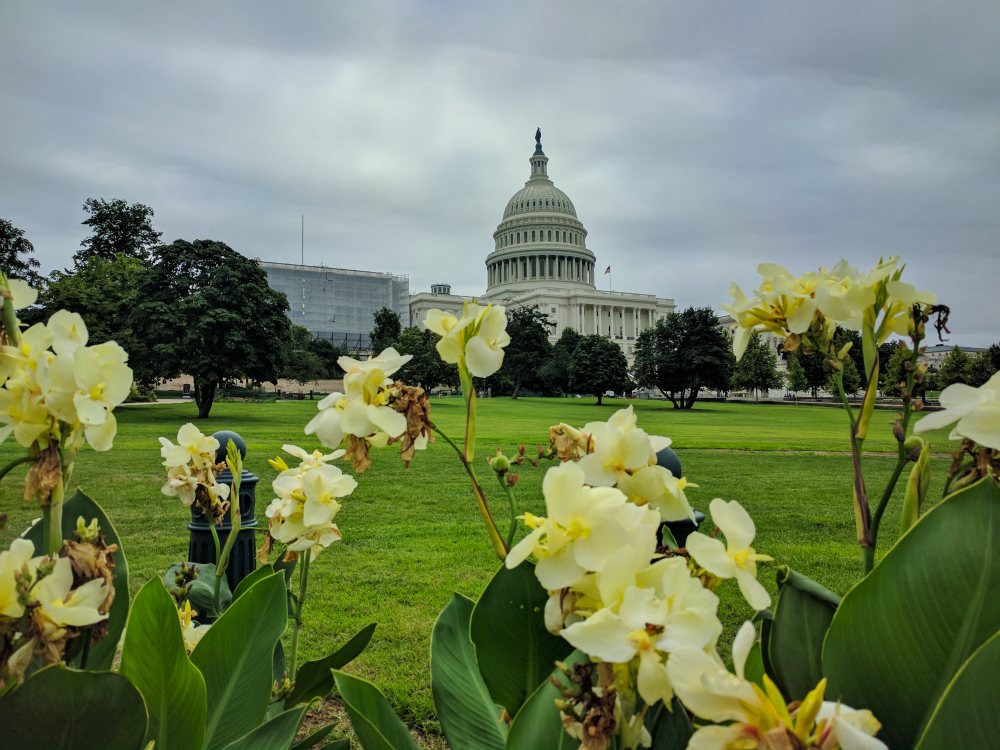
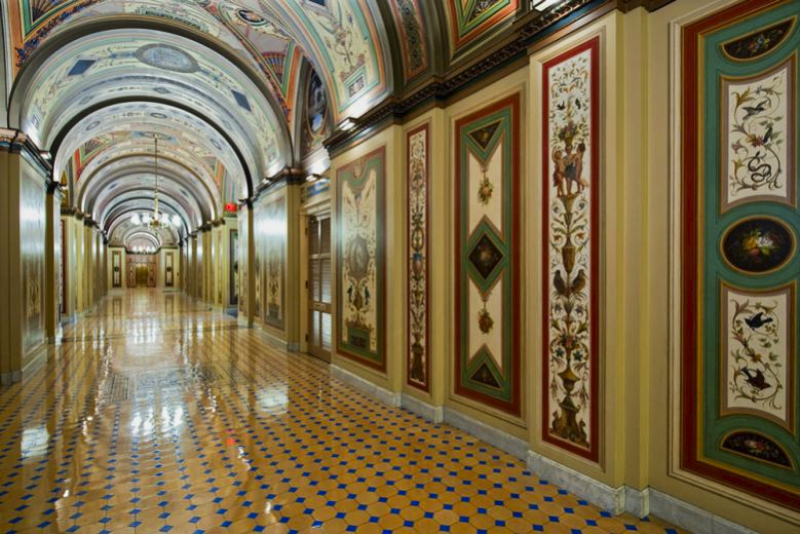
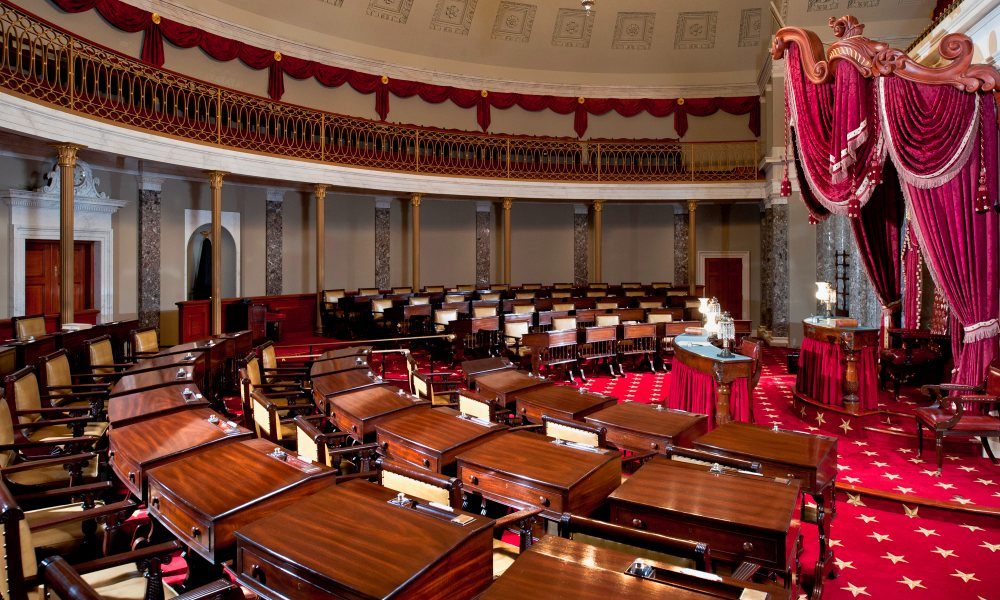
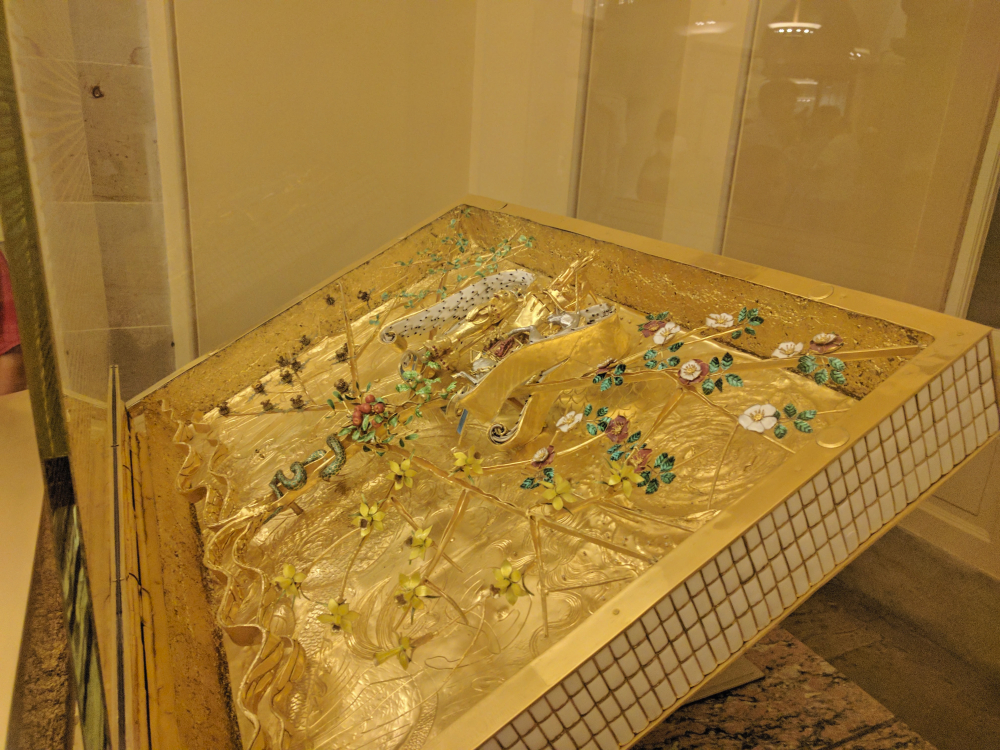
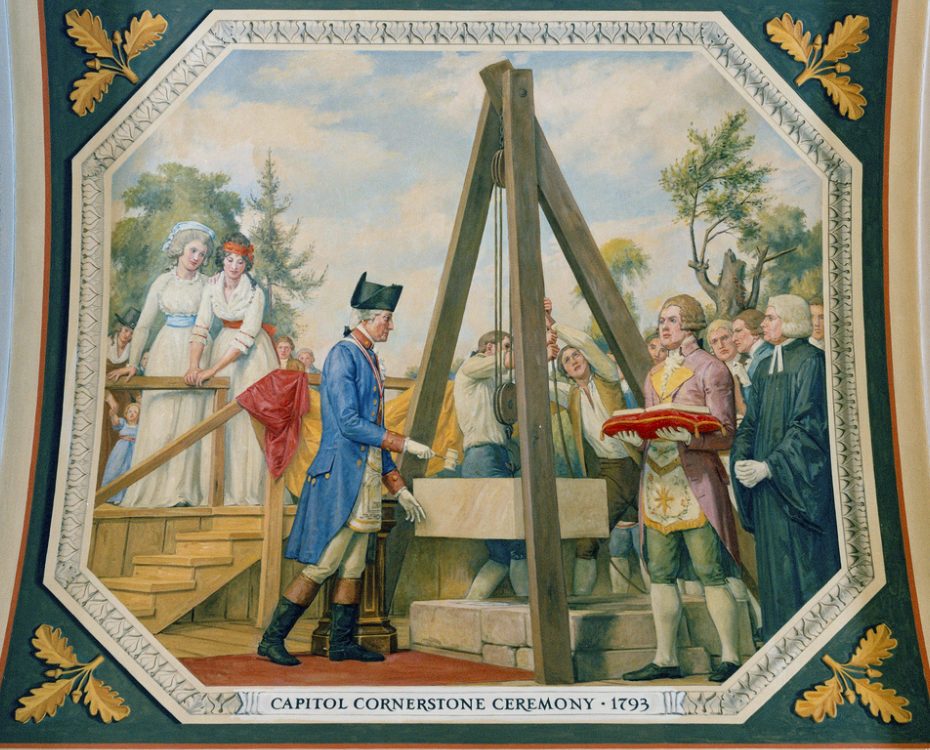
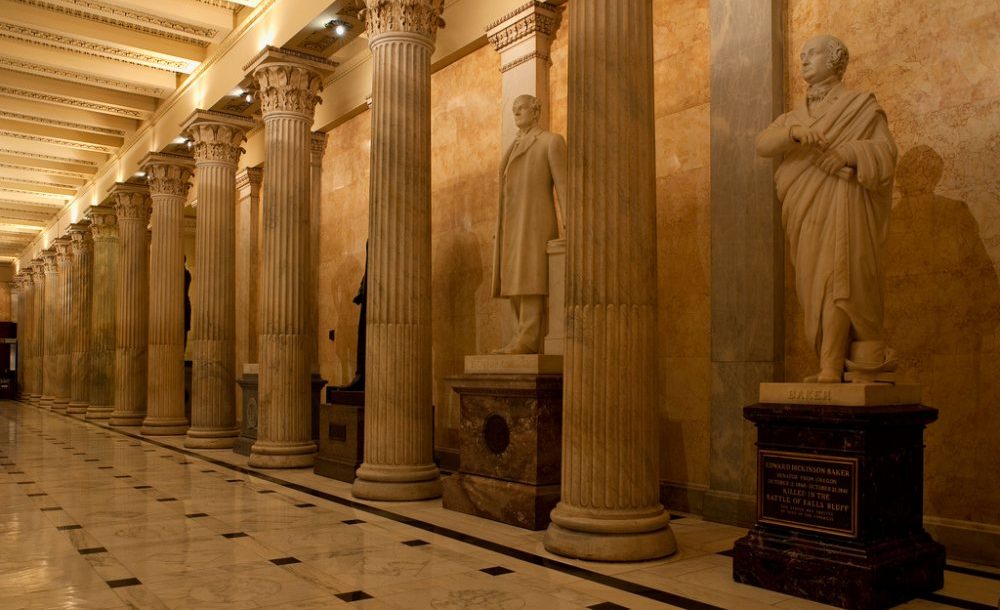
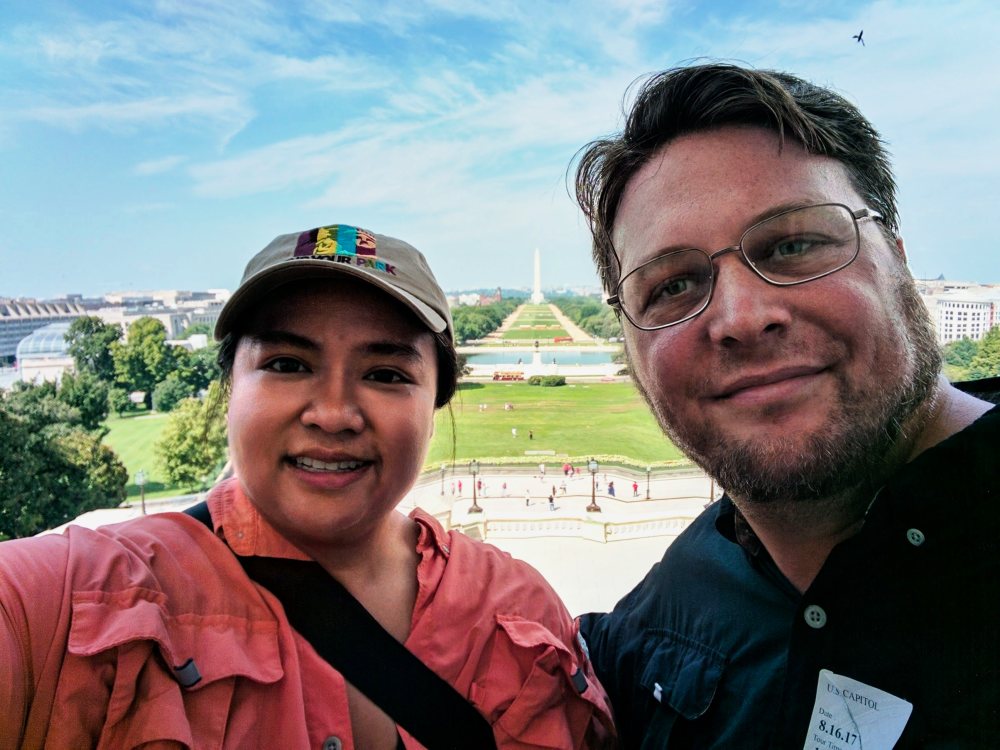
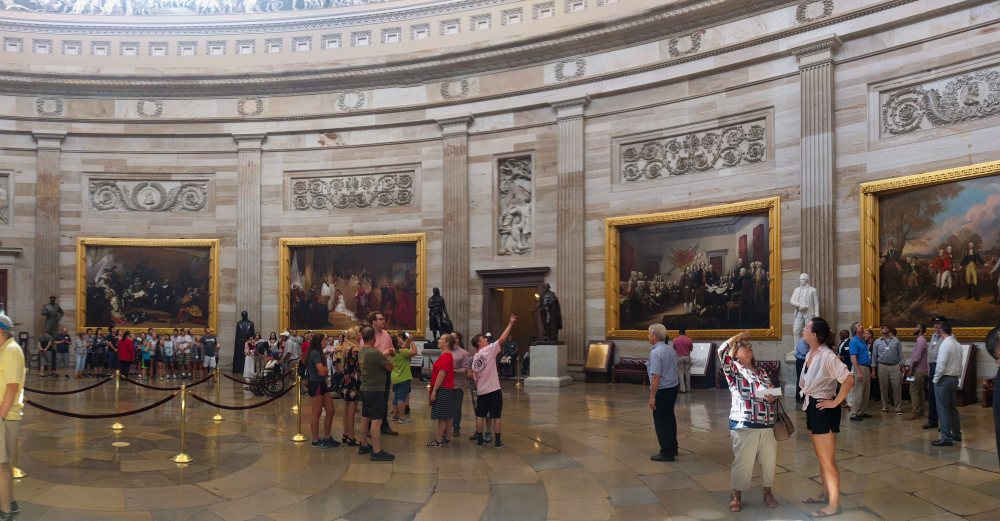
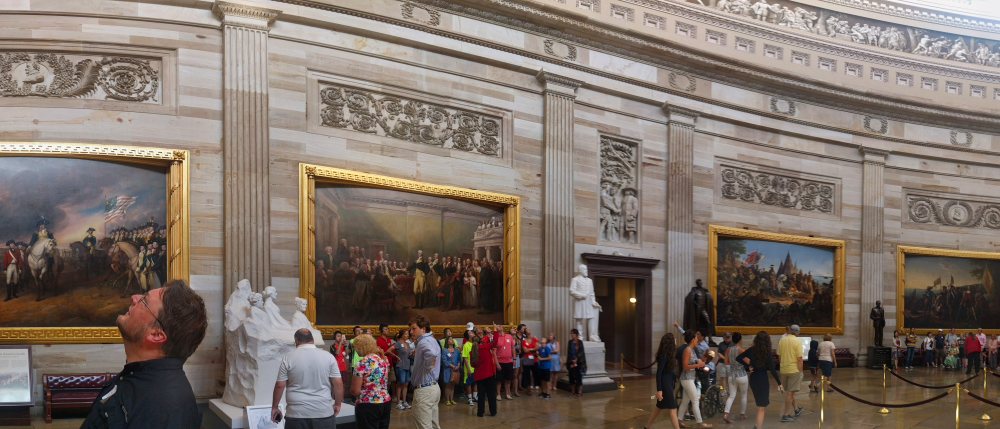
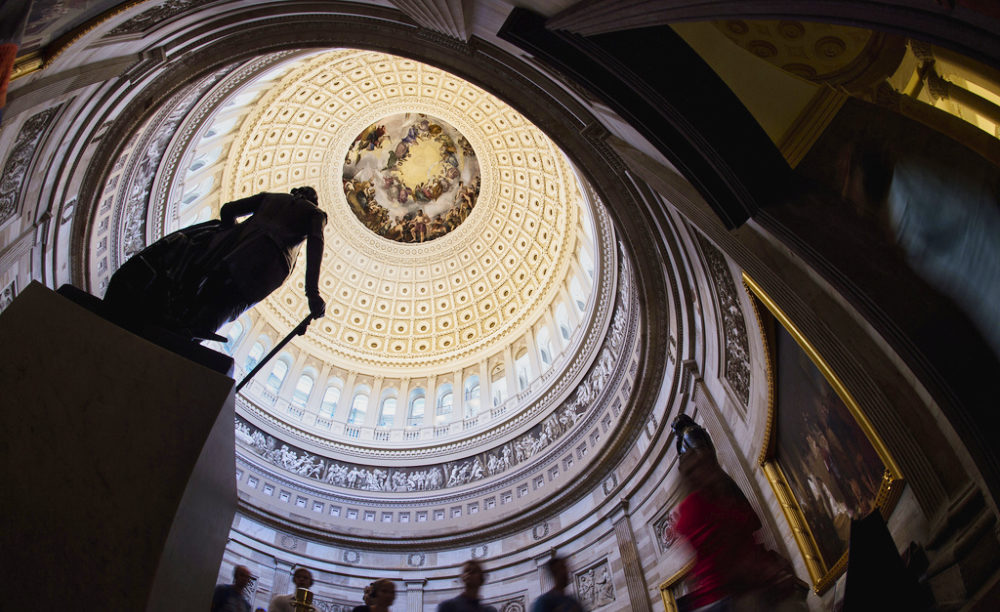
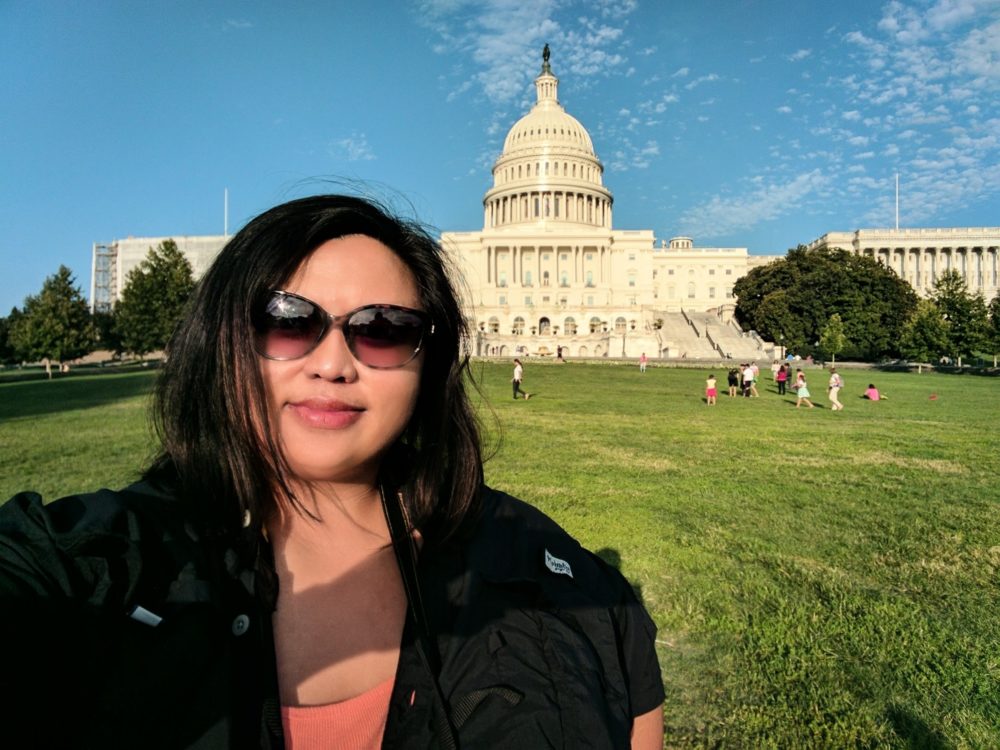
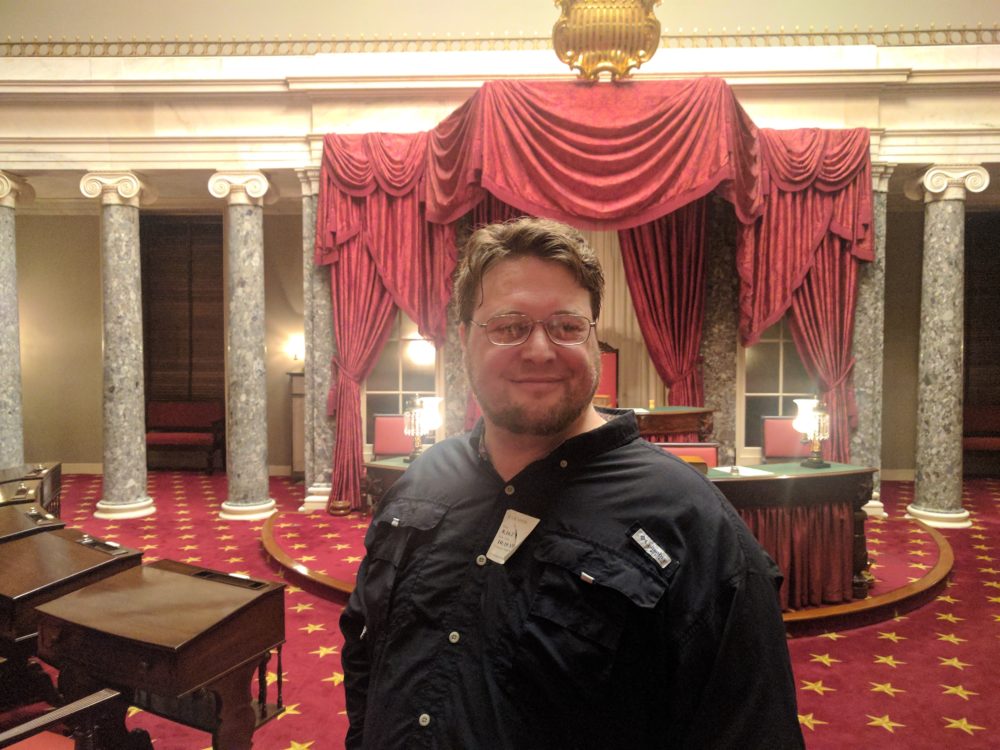
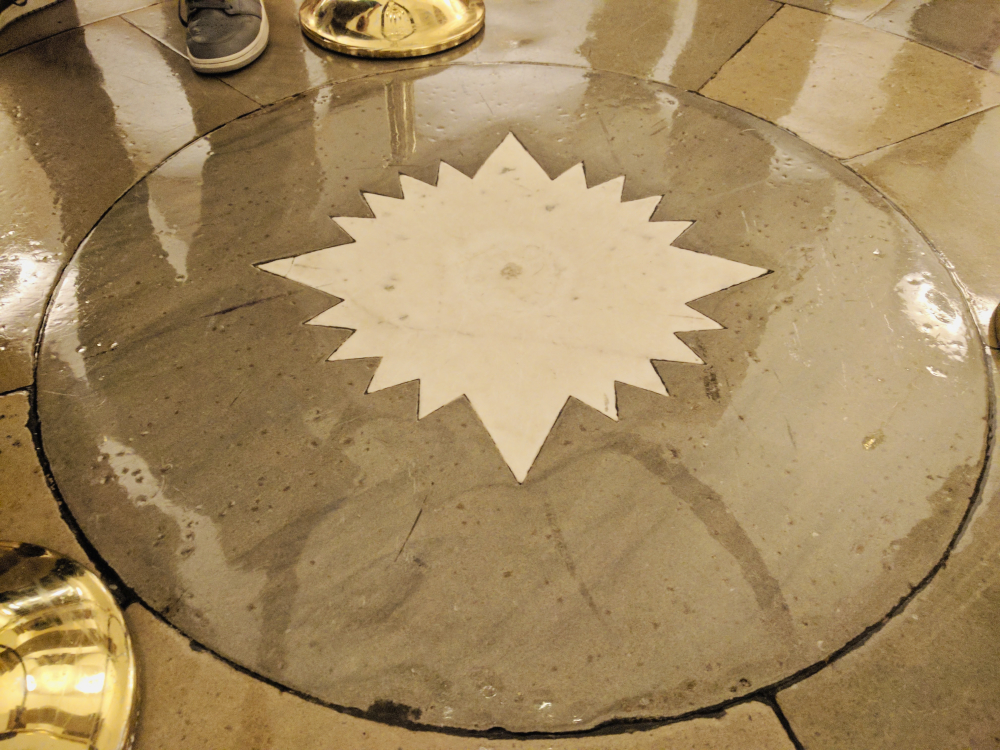

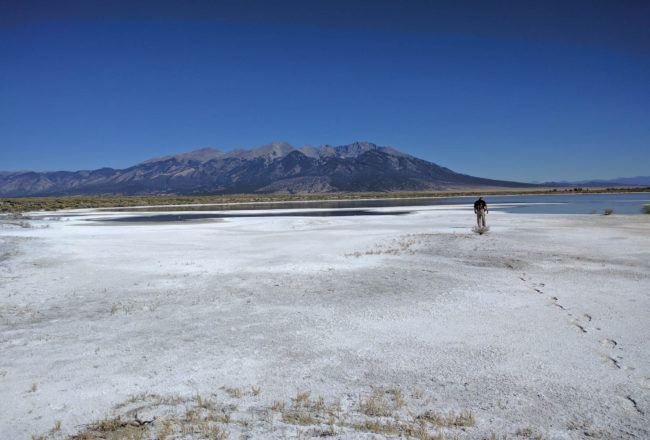
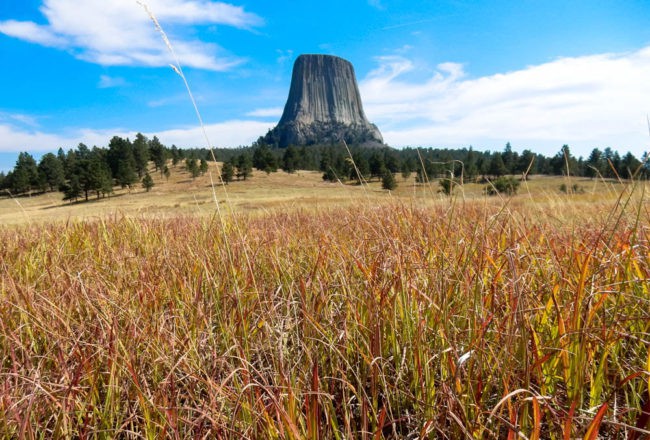
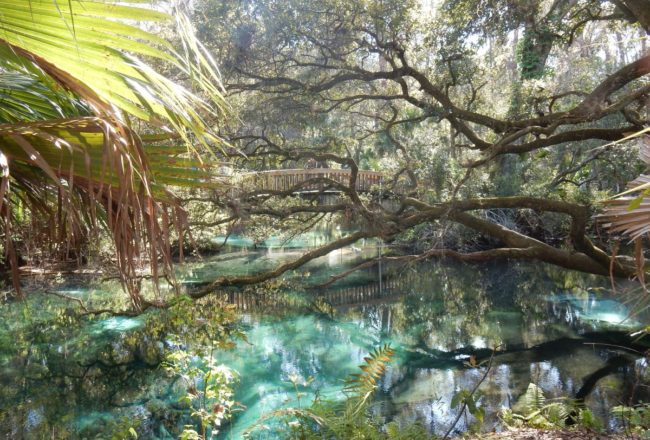


7 Comments
Thanks for all the information Anne. I had visited DC and the White House back in the Summer of 2001, but never visited the Capital building or all the places you visited. Great inspiration for my next trip. Where did you guys stay? Is there a good campground anywhere near D.C.? -Jim
Hi Jim, We stayed at Cherry Hill Park It’s an RV park just outside of DC in College Park, Maryland. We picked Cherry Hill because it was less than 15 minutes to College Park Metro Station, where we could leave our truck and take the monorail directly into DC. The Green Line to DC was around 25 minutes to DC, so it saved us a whole lot of traffic time and zero stress on finding parking. Cherry Hill was fantastic on giving us advice on touring DC and I really loved their amenities. It was a bit pricey, but we saved a bit by using our Good Sam membership.
I hope that helps! And thanks for visiting!
Makes sense. Thanks for the tip.
Thank you for your excellent detailed information regarding a visit to our US Capitol! I have never been there but want to go and never knew how to go about it and what to expect! I love all of your pictures! Great job
Glad I could help! I hope you get the chance to go. If you want to see Congress in session try visiting in the Fall.
Great write-up, Anne!
Thanks, Craig!